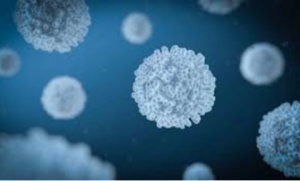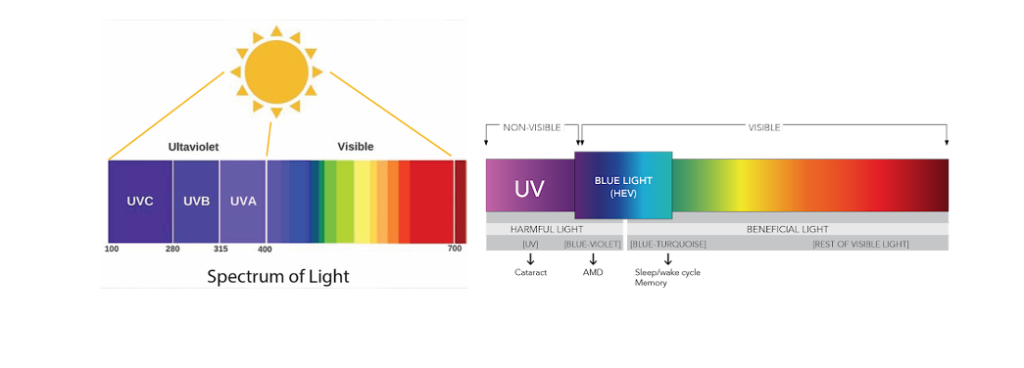![]()
Partner Lesson by Engineering Tomorrow: Today’s Students, Tomorrow’s Engineers.
Engineering Tomorrow’s nationwide program offers a wide-array of Virtual Labs (that simulate real-world projects) developed and delivered by engineers and available at no cost to your school. Kits are mailed to your school and a zoom call is set up for an engineer led virtual presentation. Sign-up for a FREE Virtual Lab today!
This lab will allow students to play the role of a biomedical engineer. They will learn about sunlight, and its characteristics, as well as some characteristics of the human body. Using this knowledge they will critically think in order to discover a treatment for Grover’s disease.
Students will be able to:
- Discover the role of light within the medical field.
- Learn the different characteristics of sunlight.
- Work through the Engineering Process.
- Create and design a medical treatment using technology.
- Use mathematical formulas in order to analyze the effectiveness of the design solution.
Age Levels: 14-18
Materials & Preparation
- The following materials for physical build are included in the ET Toolkit:
- Blue light flashlight, Photochromic paper, Brown paper for patient model
- The student or teacher supplied materials include:
- Printer paper or any construction paper for cutting small circles
Also, be sure to reference and record answers in the Interactive Student Workbook
- The following materials for physical build are included in the ET Toolkit:
Real World Applications
Additionally, other engineers can play a role in this important world of medicine as well.
 Computer engineers used their digital processing capabilities to enhance the accuracy of Magnetic Resonance Imaging (MRI). Magnetic Resonance Imaging (MRI) uses digital image processing technology originally developed by NASA Jet Propulsion Lab (JPL). Propulsion engineers used their experience with pumps and computational fluid dynamics to create the LVAD (Left Ventricular Assist Device). LVAD (Left Ventricular Assist Device) artificial heart pump is based on space shuttle fuel pump designs. This keeps people healthy as they wait on a transplant.
Computer engineers used their digital processing capabilities to enhance the accuracy of Magnetic Resonance Imaging (MRI). Magnetic Resonance Imaging (MRI) uses digital image processing technology originally developed by NASA Jet Propulsion Lab (JPL). Propulsion engineers used their experience with pumps and computational fluid dynamics to create the LVAD (Left Ventricular Assist Device). LVAD (Left Ventricular Assist Device) artificial heart pump is based on space shuttle fuel pump designs. This keeps people healthy as they wait on a transplant.
Engineering Design Challenge
Design Challenge
Imagine you are a team of biomedical engineers. How would you use the Engineering Design Process to develop a treatment for Grover’s Disease?
The Process:
Use the iterative Engineering Design Process to develop a solution. So the next step is . . .Activity Instructions & Procedures
- Step through the following procedures below (or download teacher guide)
- This will help guide and step through the project
Virtual Lab Phototherapy Presentation
Teacher Notes:
- Students will work through the Phototherapy Student Interactive Workbook
- When assigning this lesson on Google Classroom, first make a copy of the slides to save within your personal Google Drive, then make a copy for each student.
- Alternatively, download the file as a powerpoint and rename.
- The slideshow is designed in order to be interactive, this way students can type directly on the slides.
- Each slide of the presentation provides an activity for students to complete (reading, watching a video, inserting images, answering questions, etc.)
- Students may work individually or within groups.
Pre Work- Introduction to the Engineering Design Process:- Students should complete the Engineering Design Process Introduction Activity before beginning the lab
- NOTE: This activity only needs to be completed before the student’s first ET lab, not repeated for every lab
Assessment:
- Informal assessments can be completed by looking at the interactive slides within the slideshow, especially within the final reflection slide.
- An answer key for the interactive student slides can be given upon teacher request.
- Assessments outside the interactive slides are suggested below as Pre and Post Work Ideas.
Time Modification
The lesson can be done in as little as 1 class period for older students. However, to help students from feeling rushed and to ensure student success (especially for younger students), split the lesson into two periods giving students more time to brainstorm, test ideas and finalize their design. Conduct the testing and debrief in the next class period.
Engineering Design Process

Background Concepts
(how the application works) Background Topics

Grover’s is a transient skin disorder that consists of a rash on the chest and back. It is usually worse during the winter months. It primarily affects men over the age of 40. The disease goes away on its own. And there is no known cause and no effective treatment.
Patients may be prescribed various steroid creams and antihistamines until they find one that works, which means the medicine relieves the itching. But that’s all it does. It only treats the symptoms and not the underlying cause, which is why it’s not our ideal solution.
Next, there is natural sunlight which does appear to treat Grover’s disease in small amounts. However, too much sunlight could aggravate the condition and puts people at risk for the harmful effects of Ultraviolet light. On the flip side, there is usually too little access to sunlight in the winter to effectively treat the disease. Since consistently getting the correct exposure to sunlight is difficult, many patients are prescribed Vitamin D3 which is the beneficial vitamin that your skin synthesizes when exposed to the sun. However, taking too many Vitamin D3 supplements can also be unhealthy, so patients who choose this treatment must regularly monitor their D3 levels with frequent blood tests, which can be painful and inconvenient.
Another important piece of research is to study the body’s immune response. The thymus gland, located just in front of the heart, is the seat of the immune system; it directs response to bacteria, viruses, and inflammation. The thymus gland shrinks in size as you age and starts to wear out as you get older. It also turns out that light stimulates the thymus gland, boosting your immune response.
 Sunlight increases the efficiency of our T-cells, a subtype of white blood cells that helps fight infection. All white blood cells are made in the bone marrow and while some mature there, T-cells travel through the bloodstream to the thymus gland and mature there. They then circulate throughout the bloodstream until they are needed and move to the site of infection to orchestrate a response. Studies showed that sunlight activates the T-cells, making them move 300 times faster and ultimately boosting the immune system by a factor of 7 or 8. They also discovered that the particular wavelength of light that stimulates this response is blue light.
Sunlight increases the efficiency of our T-cells, a subtype of white blood cells that helps fight infection. All white blood cells are made in the bone marrow and while some mature there, T-cells travel through the bloodstream to the thymus gland and mature there. They then circulate throughout the bloodstream until they are needed and move to the site of infection to orchestrate a response. Studies showed that sunlight activates the T-cells, making them move 300 times faster and ultimately boosting the immune system by a factor of 7 or 8. They also discovered that the particular wavelength of light that stimulates this response is blue light. Sunlight is a mixture of electromagnetic waves ranging from ultraviolet (UV) to infrared (IR) rays. It includes Visible light, which is in between UV and infrared rays in the electromagnetic spectrum. The components of sunlight differ in their penetrating ability and biological effect on the body and are defined by wavelengths ranging from 100 to 700 nanometers. As the wavelength decreases, energy and frequency increase. Blue light is a color in the visible light spectrum that can be seen by human eyes. It has a short wavelength, which means it can produce a large amount of energy, making it ideal for the procedures used in this lab. Blue light makes up 7.8% of all natural light. This number will be important for later calculations.
Sunlight is a mixture of electromagnetic waves ranging from ultraviolet (UV) to infrared (IR) rays. It includes Visible light, which is in between UV and infrared rays in the electromagnetic spectrum. The components of sunlight differ in their penetrating ability and biological effect on the body and are defined by wavelengths ranging from 100 to 700 nanometers. As the wavelength decreases, energy and frequency increase. Blue light is a color in the visible light spectrum that can be seen by human eyes. It has a short wavelength, which means it can produce a large amount of energy, making it ideal for the procedures used in this lab. Blue light makes up 7.8% of all natural light. This number will be important for later calculations.

Vocabulary
Content Vocabulary/Terms:
- Phototherapy: the use of light in the treatment of physical or mental illness
- Irradiance: the flux of radiant energy per unit area (normal to the direction of flow of radiant energy through a medium)
Dig Deeper
Related Engineering Fields and Degrees
Curriculum Alignment
Engineering Design Standards:
- Next Generation Design:
- HS-ET1-1: Analyze a major global challenge to specify qualitative and quantitative criteria and constraints for solutions that account for societal needs and wants.
- HS-ET1-2: Design a solution to a complex real-world problem by breaking it down into smaller, more manageable problems that can be solved through engineering.
- International Society for Technology in Education:
- 1a: Students articulate and set personal learning goals, develop strategies leveraging technology to achieve them and reflect on the learning process itself to improve learning outcomes.
- 3d: Students build-knowledge by actively exploring real-world issues and problems, developing ideas and theories and pursuing answers and solutions.
- 4a: Students know and use a deliberate design process for generating ideas, testing theories, creating innovative artifacts or solving authentic problems.
- 4d: Students exhibit a tolerance for ambiguity, perseverance and the capacity to work with open-ended questions.
- Common Core:
CCSS.MATH.CONTENT.7.EE.B.3: Solve multi-step real-life and mathematical problems posed with positive and negative rational numbers in any form (whole numbers, fractions, and decimals), using tools strategically. Apply properties of operations to calculate with numbers in any form; convert between forms as appropriate; and assess the reasonableness of answers using mental computation and estimation strategies.
- Next Generation Design:





